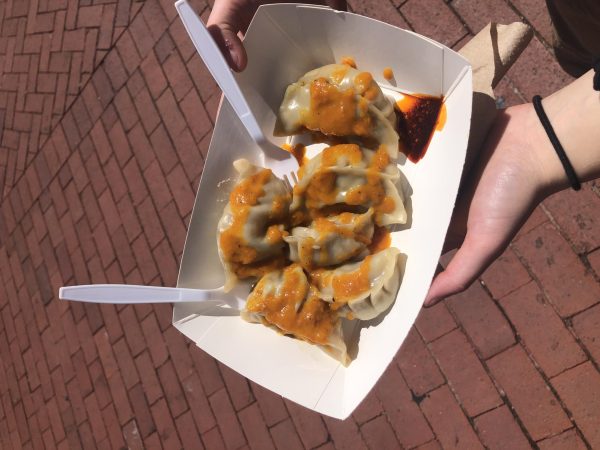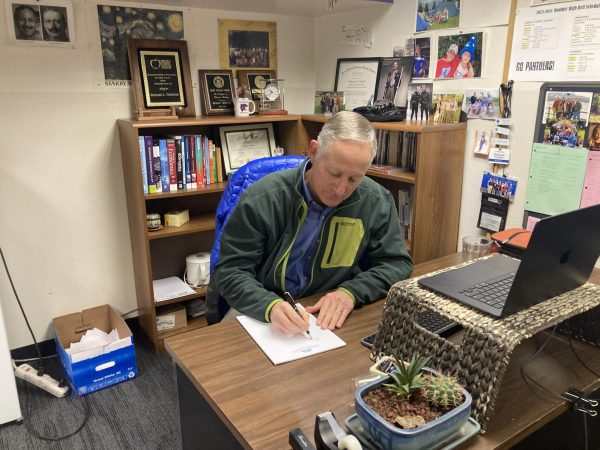Voter Fraud and Suppression
Why is President Trump so concerned about voter fraud?
After the 2016 presidential election, President Trump claims that “people who have died 10 years ago are still voting.” He referenced a study that found that 1.8 million deceased people were still on voter rolls. Still, he failed to include the information that the study found no evidence that there was an association with voter fraud. The President also claims that America is facing a massive problem of “illegal immigrants [who] are voting.” However, less than a dozen instances of this crime have occurred since 2000. If the instances of voter fraud are so rare, why has our President made them out to be such a big issue? The answer lies in voter suppression.
Looking back on American history, the examples of voter suppression are numerous. Within our constitution, the words “Right to vote” are not found. Instead, our founding fathers believed voting was a privilege and gave that privilege only to white men with property. Voting power and regulation is in the hands of the states. In his book, The Embattled Vote in America, Allan Lichtman explains that “voting, even to this day, is not guaranteed like other basic rights.” Because of this, our constitution has had to be amended many times to prevent states from denying the right to vote to certain populations. Lichtman also writes that our country is in a period of backsliding in terms of voters’ rights. Although there is no longer widespread disenfranchisement, there are now more obscure forms of denying the right to vote. These include voter ID laws, purging voter rolls, and Gerrymandering. Lichtman recalls how in the 2000 election in Florida, African Americans had a five times higher chance of their vote being discounted than their white counterparts. This essentially won Florida for President George W. Bush, which was monumental to his presidency’s winning. The Republican party relies on a support base of mainly older, white, Christian men –currently the fastest shrinking portion of our population. One of the Republican Party’s best tactics to staying in power is limiting the voter turnout for Democrats. One way they do this is through strict voter ID laws like in Wisconsin. In the state of Wisconsin, Republicans argued that “ID requirement is necessary to combat an epidemic of fraudulent voting.” During the 2016 election, at least 16,800 Wisconsin residents did not vote because of the new voter ID law. Either they did not have an acceptable ID, or their ID did not match their current identity. Voter ID laws can be especially oppressive for the transgender population; in fact, it is estimated that 260,000 trans adults in the United States will not vote this year because their name or gender does not match their ID.
Voter ID laws aren’t the only thing plaguing U.S. voters today. Gerrymandering is another form of voter suppression that, unlike voter ID laws, benefits both political parties. Gerrymandering occurs when a political party draws districts to favor a particular outcome, as shown in the diagram. Our system’s goal is to have perfect representation for all citizens, but instead, districts are drawn to reflect which party has control in a specific community. Both Democrats and Republicans are guilty of this. In a study conducted by the University of Maryland, it was discovered that after district lines were redrawn, 27 seats in Congress were given to the GOP in states that leaned Republican. That same study found that in democratic leaning states, Democrats were able to decrease Republican representation by 8.9%-12.6% through the use of gerrymandering. Some states have aimed to eliminate gerrymandering like Arizona. After independent district lines were drawn in Arizona, it was found that the election process was much more competitive than they had previously been and candidates were winning by smaller margins. The same thing happened in California when they redrew their district lines in 2010. The average margin of victory was 30% lower than it had been in the old district. Eliminating gerrymandering may not flip the House or the Senate, as seen in Arizona. Still, it will make elections fairer and give people both sides of the political spectrum more representation.
With the onset of COVID-19, many states began to offer more opportunities to vote by mail. Five states, including Colorado, already conduct all elections by mail. This year 29 additional states and The District of Columbia will be allowing absentee voting for any reason, including fear surrounding COVID-19. However, 16 other states will not accept the fear of COVID-19 as an excuse for absentee voting. Many of these 16 states also do not offer early in-person voting, which will be detrimental to voter turnout due to the absence of at-risk voters.
In an interview with Mircalla Wozniak from the Boulder County Clerk’s Office, Wozniak says that voter turnout, especially in younger populations, has increased since Colorado switched to permanent all-mail elections. Before Colorado became an all mail-in state, about 70 percent of registered voters had chosen to vote by mail. In 2014 we officially made the switch to a permanent absentee ballot state. Wozniak also stressed the importance of voting because just a handful of votes decides many of our elections. Her biggest advice to young voters is that “voting is not a test.” You don’t have to vote the full ballot. If you are unaware of the topic, you can skip that specific contest, so feel free to vote on anywhere from one to all of the election issues this November.
Many Boulder High students will get the opportunity to vote for the first time in this election and to prevent your ballot from being invalidated; there are few steps everyone should take. Firstly, make sure not to throw out the blue information sheet that comes with your ballot. Follow the instructions on the sheet very carefully. Because it’s your first time voting, there is most likely only one signature on your record. Pay close attention to your signature and try to sign as similarly to your signature on file, most likely your driver’s license. Some people may need to include a copy of their ID the first time they vote, like your driver’s license or passport. Finally, if your email is not on file, you will want to sign up for Ballot Track to keep an eye on your ballot. If you are concerned about mailing your ballot, you can drop it at a dropbox, but Boulder County is working closely with the postal service to ensure that mailing in your ballot is perfectly safe. The county will mail the final ballots on October 26th, so make sure to register by then if voting in person; Boulder County vote centers will be open between October 19th and November 2nd. Try to mail your ballot Monday, October 26th, eight days before the election to give it the proper time to be counted. Voting is the best way to overturn oppressive systems like voter ID laws and gerrymandering, preventing so many of our fellow Americans from voting this election. Everyone eligible should exercise their fundamental right and vote this November!
If you are not registered to vote, head to https://www.sos.state.co.us/voter/pages/pub/home.xhtml
Boulder drop boxes are located:
Boulder County Clerk & Recorder 1750 33rd Street
Boulder County Courthouse 2025 14th Street
Boulder County Housing & Human Services 3400 Broadway
CU Campus-UMC 1669 Euclid Avenue
South Boulder Recreation Centers 1360 Gillaspie Drive
Boulder Vote Centers:
Boulder County Clerk & Recorder 1750 33rd Street
CU Campus- UMC 1669 Euclid Avenue
Boulder Meadows 4500 19th Street
East Boulder Community Center 5660 Sioux Drive
Mt. Hope Lutheran Church 1345 S. Broadway
Boulder Public Library 1001 Arapahoe Avenue
CU-Williams Village 500 30th Street

Ella Webber is a senior at Boulder High and a new member of The Owl. She’s excited to be a part of the paper and hopes to have the opportunity to share the stories of students who aren’t always heard. She hopes to learn as much as possible about the world of journalism and to improve and expand her writing style. Ella is a rower and has been on the crew team for five years and when she’s not out on the water she spends her time exploring the outdoors and all the natural wonders Colorado has to offer. She enjoys fishing and rock climbing with her friends and can be heard blasting ABBA at all hours of the day. One of Ella’s heroes is the “The Queen of Disco” Donna Summer who overcame...






